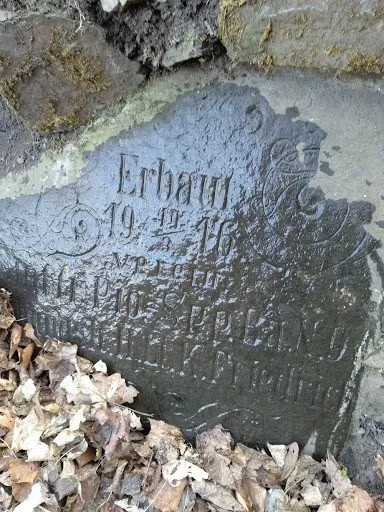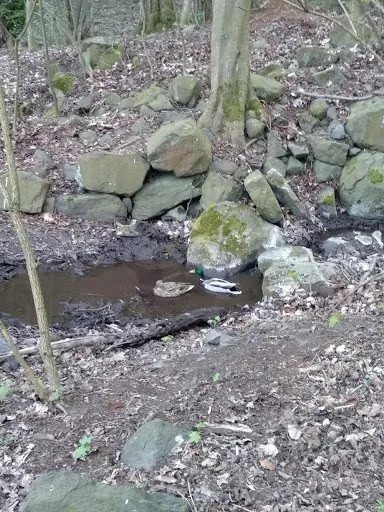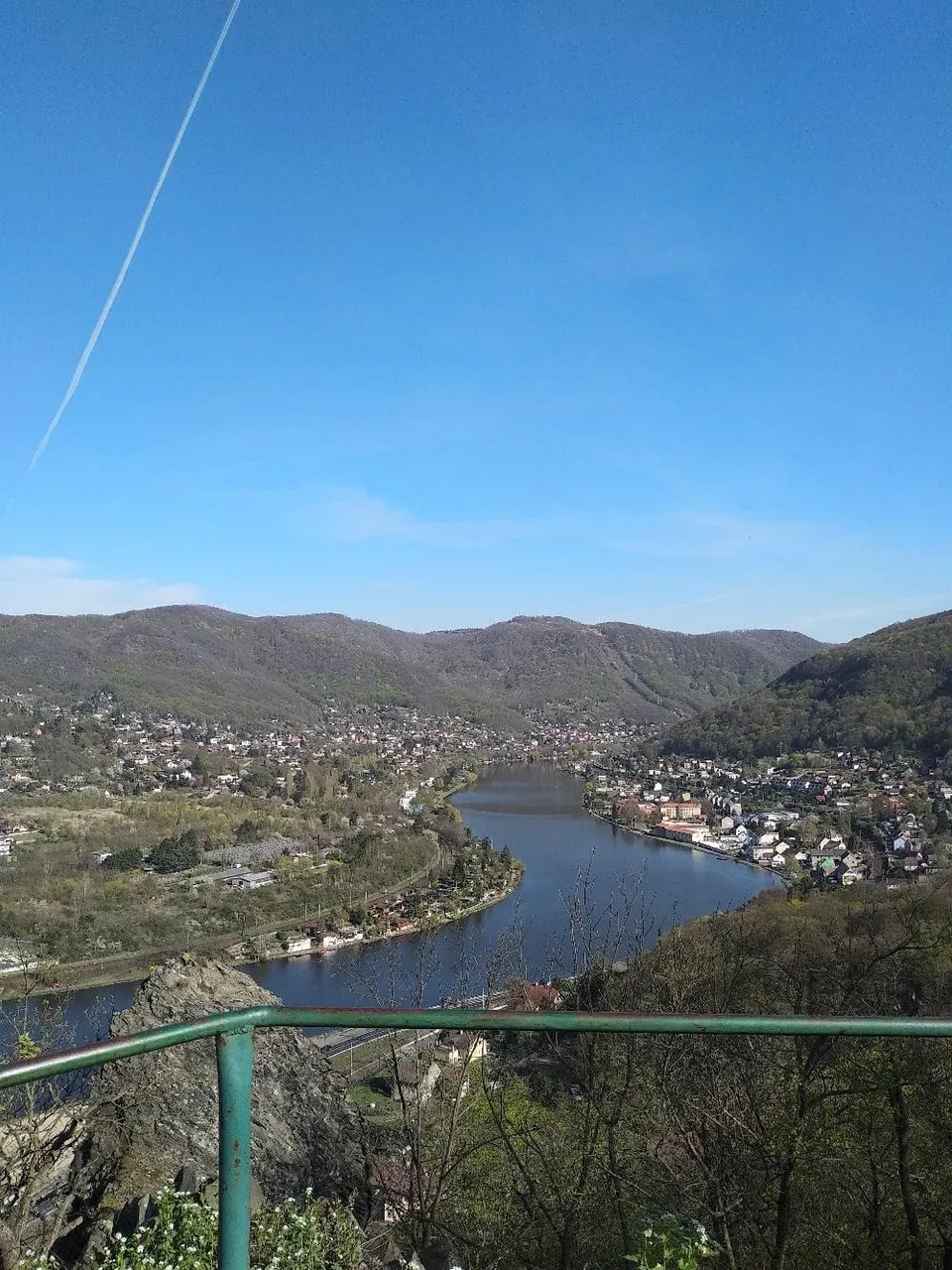Hello everyone!
My name is Maria, I am from Belarus, but I study at the Czech University at the Faculty of Design. I live in Usti nad Labem. This city is located in the mountains. The nature here is charming. Since quarantine has been introduced all over the world, I want to share the beauty of nature and the city in which I live. Today I want to introduce you to the Vaňovský waterfall, which is located near the center of Usti nad Labem, and also to tell a story about it.

Thanks to its height, amazing natural scenery and convenient location near the town and other very attractive tourist destinations, the Vaňovský waterfall ranks among the most famous and most visited waterfalls of the České středohoří Mountains. His visit is always an extremely impressive experience.
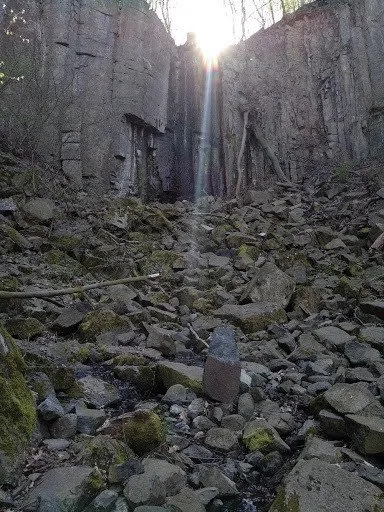
The waterfall consists of two basalt stages separated by a deep rock gorge. Since the distance between these steps does not exceed their height (although this is at the border), Vaňovský waterfall is considered to be a two-stage waterfall. The total height difference between the upper edge of the upper and the lower edge of the lower level is 26 m. This makes the Vaňovský waterfall one of the highest waterfalls in the Czech Republic. He is ranked 11th in the statistical tables.
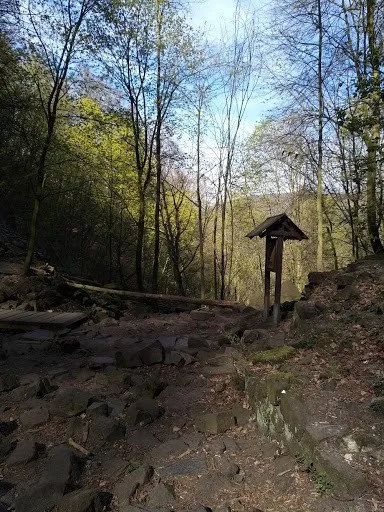
Vaňovský waterfall is situated on the Podlešínský creek, which is named after the village, located high on the left edge of the Elbe canyon. In order to level its downward curve, this stream down to the Elbe has excavated a deep gorge over the ages on the slope of the Elbe canyon. Where a solid obstacle stood in his way, a waterfall was created. This hurdle is a massive basalt massif with columnar separation, which was established here thirty million years ago as a lava sheet in volcanic activity. A well-visible remnant, more precisely the tributary channel of this volcanic process, is the adjacent, geologically well-known rock formation Vrkoč.
Only the lower level of the Vaňovský waterfall is accessible to tourists. It is 12 m high and at its heel is a large debris field into which the falling stream spills. The view of this waterfall is very impressive, the rock massif creates on both sides of the waterfall a massive rock boiler consisting of massive basalt columns. In 1884, this purely natural scenery was disturbed by the construction of a cruise restaurant, but it was destroyed on August 22, 1925 by a flood of great water. Today, it remained only the baseless walls of the walls.
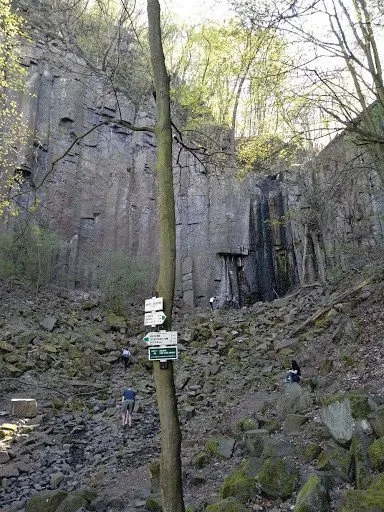
The upper step is 8 m high and unlike the lower step does not have a perpendicular gradient. However, it is difficult to access. If you set off from the lower level on the left, you will find a very steep, scree and sometimes even overgrown precipice with the remains of a long-lost tourist path. After a strenuous ascent, it will lead you above the rock face of the gorge, which connects both stages of the waterfall. From here there is an interesting view of the upper level, but be careful here, the terrain is unpaved and quite dangerous. If you go from the lower level to the right along the hiking trail towards Větruša and further from the crossroads to Podlešín, you must first cross the mountain ridge to the left of the road. Then a more strenuous descent to the bottom of the gorge between the two waterfalls awaits you. The third, least demanding alternative is the remains of the road leading to the ruins of the former Devil's Mill. It turns off from the yellow marked trail at the point where the road leading to Podlešín starts from the forest to the meadow. Even this path, which slowly descends back down the stream about 250 m, is not without risk. In summer it is quite overgrown and difficult to wet in wet conditions. At the Devil's Mill, where by the way there is another beautiful waterfall, then you have to cross the stream. From here it is only a few tens of meters to the outlook above on the edge of a rocky gorge.
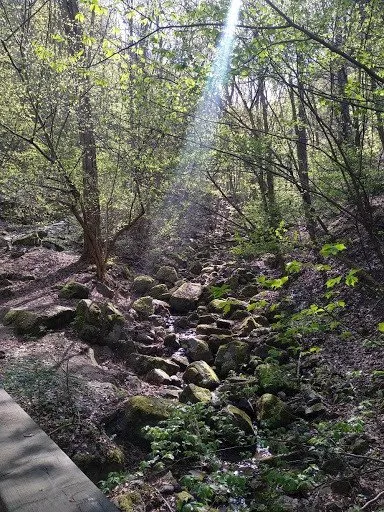
Due to the low flow rate (20 liters / second), I recommend planning a trip to the waterfall in early spring. A spectacular experience is a visit at a time of melting, when a massive mass of water rushes down at a tremendous speed, or freezing in winter when the waterfall is frozen. On the other hand, in the summertime, the surrounding terrain is quite overgrown and the flow is minimal.

ACCESS
The starting point for visiting the waterfall is the unforgettable rock massif Vrkoč on the left bank of the Elbe Valley in Vaňov. From here, the old, green-marked hiking path of the ravines of the Podlešínský creek rises up to the waterfall (approx. 0.6 km). The waterfall, however, also leads a very beautiful tourist path from the restaurant Větruše above the center of Usti nad Labem. It is joined by a yellow-marked path not far from the waterfall, leading from Podlešín via Masarykova Střekov locks to Střekov Castle on the opposite bank of the Elbe bank.
